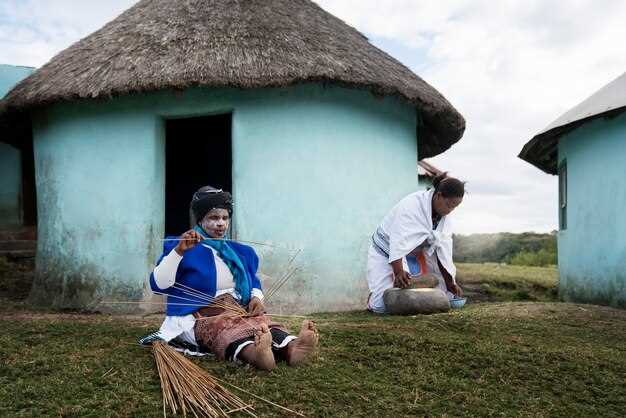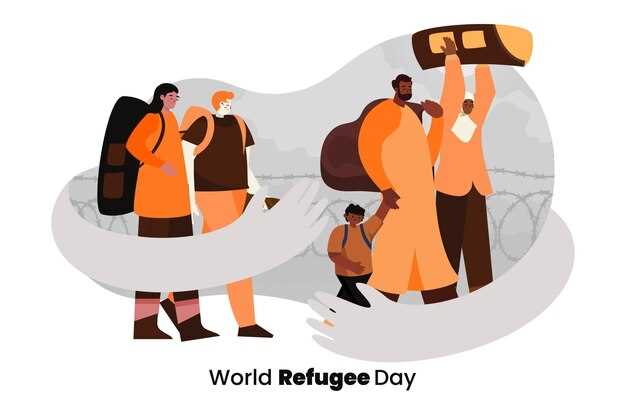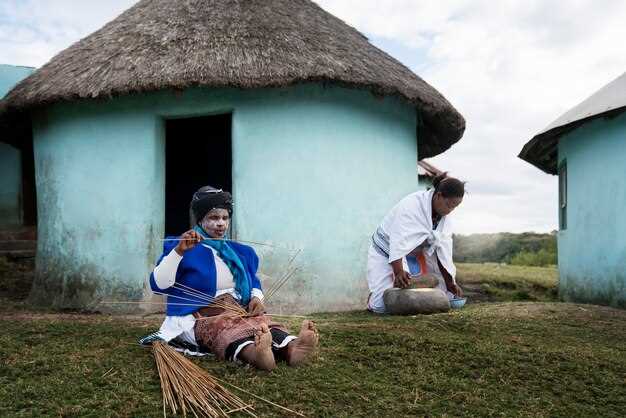Integrate culturally relevant curricula in educational institutions to empower Indigenous communities. This approach honors unique traditions and languages, ensuring that students see themselves reflected in their learning environments. By engaging local elders and cultural leaders in curriculum development, schools can provide authentic experiences that resonate deeply with Indigenous students.
Implement mentorship programs that connect Indigenous youth with role models from their communities. These programs encourage academic and personal growth, fostering a sense of identity and belonging. Participants benefit from guidance tailored to their specific cultural contexts, enhancing self-confidence and aspirations for the future.
Encourage partnerships between governments, educational institutions, and Indigenous organizations. Collaborative initiatives can lead to resources that support language preservation and cultural practices. Collective efforts contribute to a supportive ecosystem that values Indigenous knowledge while addressing educational disparities.
Understanding Indigenous Knowledge Systems

Utilize Indigenous knowledge systems to enrich educational practices. These systems provide a deep understanding of local ecosystems, social structures, and cultural practices, encouraging a curriculum that reflects the community’s values and traditions.
- Encourage Collaboration: Involve community leaders and elders in curriculum development. Their insights can guide educators in creating culturally relevant materials.
- Integrate Oral Traditions: Incorporate storytelling as a learning tool. Oral histories transmit knowledge and foster a sense of identity among students.
- Promote Traditional Ecological Knowledge: Teach students about local flora and fauna through hands-on experiences. This approach connects them with their environment and encourages stewardship.
- Utilize Place-Based Education: Use the surrounding landscape as a classroom. Highlight local history, geography, and natural resources to make learning more relatable and engaging.
- Facilitate Language Preservation: Offer courses in Indigenous languages. This practice not only supports cultural identity but also enhances cognitive development.
Recognize the value of holistic perspectives in Indigenous cultures. Knowledge encompasses not just facts but also relationships within the community and the environment.
- Focus on Interconnectedness: Teach concepts that stress the relationships between people, nature, and spirituality. This holistic view enriches the educational experience.
- Encourage Critical Thinking: Challenge students to analyze and apply Indigenous knowledge in modern contexts. This approach develops problem-solving skills and innovation.
- Build Cross-Cultural Understanding: Foster respect and appreciation for diverse knowledge systems. This practice enhances dialogue and cooperation between Indigenous and non-Indigenous communities.
Support initiatives that advocate for the inclusion of Indigenous knowledge in policy-making. Sustainable development projects benefit significantly from these perspectives.
Identifying Barriers to Education in Indigenous Communities

Addressing the specific challenges in education for Indigenous communities requires a targeted approach. Begin with recognizing the significance of culturally relevant curricula that reflect the values and history of Indigenous peoples. Integration of local languages in teaching fosters engagement and pride among students, yet the availability of trained teachers fluent in these languages remains limited.
Access to Resources
Unequal access to educational resources severely hinders academic achievement. Many Indigenous communities lack adequate infrastructure, including schools and libraries. Governments and organizations should prioritize funding for transportation services that facilitate students’ journeys to educational institutions. Investing in technology and connectivity ensures that no community is left behind, especially in remote areas.
Community Engagement
Encouraging participation from Indigenous leaders and families in educational planning promotes trust and relevance in educational policy. Engaging community members in decision-making cultivates a sense of ownership and can lead to tailored educational programs. Establishing partnerships with Indigenous organizations can enhance support systems for students and families, promoting a collaborative environment that values cultural identity.
Addressing standardized testing methods that do not account for Indigenous cultural backgrounds further enhances educational equity. Adopting alternative assessment models allows for a more comprehensive evaluation of student capabilities. Continuous feedback and adaptation of teaching methods to meet the diverse needs of learners can lead to improved outcomes within Indigenous educational settings.
Integrating Traditional Practices into Modern Educational Frameworks

Incorporate local Indigenous knowledge into curriculums by collaborating with Indigenous Elders and community leaders. This collaboration enriches the learning experience, offering students insights into cultural heritage while promoting respect for traditional practices.
Curriculum Development
Design courses that reflect Indigenous histories, languages, and philosophies. Use storytelling techniques common in Indigenous cultures to make lessons more relatable and engaging. Highlight traditional ecological knowledge, especially in subjects like science and environmental studies, showcasing sustainable practices developed over generations.
Hands-On Learning
Establish programs that include experiential learning through land-based activities. Facilitate workshops on traditional arts, crafts, and rituals. These activities help students connect with their heritage and create personal ties to their community’s traditions. Encourage collaboration with local artisans to provide students with authentic learning experiences.
Integrate Indigenous perspectives into assessment methods by valuing oral presentations and community projects. Recognize various forms of knowledge and expression as valid components of student evaluation. This approach promotes a deeper understanding and appreciation of Indigenous cultures within the classroom.
Promote inclusivity by creating spaces where Indigenous students feel comfortable sharing their culture with peers. Foster dialogue among students to encourage mutual respect and learning. This supportive environment strengthens both Indigenous and non-Indigenous students’ identities, paving the way for a more integrated educational framework.
Role of Community Leaders in Shaping Educational Content
Community leaders must actively engage in the development of educational content that reflects indigenous values, culture, and historical context. This engagement ensures that curricula resonate with the students’ identities and backgrounds.
Engaging Through Consultation
Regular meetings and focus groups allow leaders to gather insights from community members. Implementing these sessions provides valuable feedback and perspectives that enrich educational content. Strategies include:
- Organizing workshops where elders share traditional knowledge.
- Encouraging youth to contribute ideas on topics they find relevant.
- Collaborating with teachers to align educational goals with community values.
Building Partnerships with Educational Institutions
Leaders should establish strong partnerships with local schools and universities. These collaborations can yield diverse resources and expertise while ensuring that the educational content respects indigenous narratives. Consider these approaches:
- Creating joint committees with educators to review and adapt curricula.
- Providing training for teachers on culturally responsive practices.
- Facilitating internships for students within local cultural organizations.
Community leaders play a pivotal role in creating a curriculum that not only educates but also empowers. By prioritizing local knowledge and experiences, they foster an environment that values indigenous perspectives and nurtures future generations.
Developing Culturally Relevant Curriculum for Indigenous Students
Incorporating Indigenous perspectives into the curriculum can significantly enhance student engagement and learning outcomes. Begin by involving Indigenous community members in curriculum design. Their input ensures cultural authenticity and relevance. Collaborate with local Elders and knowledge holders to weave traditional stories, languages, and practices into academic subjects.
Integrating Indigenous Knowledge
Integrate Indigenous ways of knowing in subjects like science, history, and arts. For instance, when teaching environmental science, include Indigenous approaches to sustainability and land stewardship. Highlight traditional ecological knowledge alongside Western scientific methods. This approach not only empowers Indigenous students but also enriches the learning experience for all students.
Encouraging Language Revitalization
Include Indigenous languages as part of the curriculum. Offer courses designed to teach native languages and promote language use in everyday school activities. A bilingual education model can help strengthen cultural identity and improve academic performance. Create resources that support this initiative, such as bilingual texts and digital applications.
| Strategy | Description |
|---|---|
| Community Involvement | Collaborate with Indigenous Elders and community leaders to guide curriculum content. |
| Interdisciplinary Learning | Combine traditional knowledge with academic subjects for a holistic approach. |
| Language Programs | Implement language courses to promote Indigenous languages and culture. |
| Storytelling and Arts | Incorporate storytelling sessions and arts to express Indigenous heritage and values. |
Provide professional development for educators focused on Indigenous histories and pedagogies. This training equips teachers with tools to deliver culturally sensitive lessons effectively. Encourage ongoing reflection on teaching practices to better serve Indigenous students and promote understanding among all learners.
Utilizing Technology to Enhance Learning in Remote Areas
Implement mobile learning applications tailored for the specific needs of indigenous students. These apps can provide a rich repository of resources that incorporate local languages, histories, and cultures. For instance, integrating community stories within educational content helps students relate to what they learn.
Establish local internet access points using satellite technology or community Wi-Fi networks. This connectivity facilitates live classes, video tutorials, and access to global educational platforms. Small satellite dishes or community-based antenna systems can significantly improve connectivity in remote regions.
Incorporate offline resources such as e-books or video lectures onto portable devices like tablets. This allows students to learn without continuous internet access. Devices pre-loaded with relevant materials can be distributed during community workshops, ensuring no one misses out on educational opportunities.
Utilize interactive learning tools like virtual reality (VR) and augmented reality (AR) for immersive educational experiences. Local educators can adapt content for VR, giving students virtual tours of historical sites or ecosystems, making complex subjects engaging and tangible.
Train local educators in the use of technology through hands-on workshops. This builds capacity within the community and helps teachers integrate technology into their curricula effectively. Peer-to-peer learning can enhance skills and boost confidence while encouraging collaboration.
Create partnerships between local schools and tech organizations. This collaboration can lead to tailored solutions that address the unique challenges faced by remote communities, such as developing localized educational apps or teacher training programs.
Encourage students to participate in online community projects that allow them to showcase their culture and knowledge. Involving them in global forums or competitions not only fosters confidence but also enhances their learning experiences by interacting with diverse perspectives.
Lastly, constantly gather feedback from students and educators on technological solutions. This reinforces a cycle of continuous improvement, helping to refine tools and processes for better educational outcomes in the community.
Building Partnerships Between Indigenous and Non-Indigenous Educators
Establish collaborative initiatives that encourage knowledge exchange and respect for cultural practices. Joint workshops allow educators to share teaching methods and cultural insights, enriching the educational experience for all students. Such workshops can highlight Indigenous ways of knowing alongside Western pedagogies, leading to a more inclusive curriculum.
Creating Inclusive Curriculum
Work together to develop a curriculum that represents both Indigenous and non-Indigenous histories and perspectives. Inviting Indigenous educators to co-create content ensures authenticity and relevance. Include local Indigenous narratives, languages, and histories to create a sense of belonging among students.
Mentorship Programs
Implement mentorship programs where experienced Indigenous educators support their non-Indigenous counterparts. This partnership provides guidance on cultural sensitivity and effective teaching strategies. Encourage reciprocal mentorship, where non-Indigenous educators can offer skills in areas like technology integration while learning about Indigenous pedagogies in return.
Regular reflection on partnership outcomes is vital. Create feedback loops involving educators and community members to assess the impact of collaborative efforts. Prioritize transparency and open dialogue to strengthen these relationships.
Partnerships built on mutual respect and shared goals lead to enriched educational experiences, empowering students from both communities.
Promoting Language Revitalization through Educational Programs
Integrate Indigenous languages into the curriculum at all educational levels. Schools should offer units focused on Indigenous languages, incorporating local dialects and traditions. Collaboration with community leaders provides authentic content and context.
Hands-On Learning Experiences
Encourage experiential learning through cultural workshops. Activities can include storytelling, traditional songs, and craft-making sessions delivered in the local language. This method not only enhances language retention but also deepens students’ connections to their heritage.
Technology and Language Learning
Utilize technology to create language apps or online courses. Engaging digital platforms can attract younger audiences and provide interactive resources. Combine traditional teaching methods with modern tech to enhance learning experiences.
Establish partnerships with linguistic organizations to develop quality educational materials. These resources should be accessible and culturally relevant, ensuring they resonate with students and educators alike.
Empowering Youth: Leadership Development through Education
Implement mentorship programs within schools to connect students with local leaders. This creates opportunities for youth to learn from those who have navigated similar challenges, fostering a strong sense of community and personal responsibility. Encourage mentors to share their experiences and provide guidance while promoting the importance of cultural identity.
Integrating Indigenous Knowledge
Incorporate traditional knowledge and practices into the curriculum. This approach not only values local heritage but also empowers Indigenous youth by validating their culture. Utilize storytelling as a teaching strategy; it enhances engagement and allows students to reflect on their identity while learning important leadership skills through historical narratives.
Promoting Critical Thinking and Problem Solving
Encourage youth to engage in projects that tackle real community issues. Assigning roles in these projects enhances collaboration and enables young leaders to explore innovative solutions. Workshops can focus on developing skills such as public speaking, project management, and conflict resolution. This hands-on experience builds confidence and prepares them to take on leadership roles within their communities.
Create opportunities for youth to showcase their initiatives through community events or forums. Public recognition boosts their self-esteem and inspires others. Support youth-led initiatives with funding or resources to ensure sustainable impact, helping them to see the tangible outcomes of their leadership efforts.
Measuring the Impact of Educational Initiatives on Cultural Identity
Utilize qualitative and quantitative research methods to assess how educational initiatives influence cultural identity within Indigenous communities. Conduct surveys that quantify changes in self-identification and cultural pride before and after program participation. Engage with community elders and leaders to gather narratives that reveal shifts in cultural practices and beliefs.
Data Collection Strategies
Implement focus groups within the community to gain insights into participants’ experiences. Collect anecdotal evidence demonstrating cultural resurgence, such as increased participation in traditional ceremonies or language use. Collaborate with local researchers to analyze attendance rates and completion statistics, linking these figures to cultural engagement.
Evaluation Metrics
Establish specific metrics, such as the number of cultural events hosted by participants post-education, or proficiency levels in traditional languages. Measure intergenerational transfer of knowledge by tracking how participants educate younger generations about their cultural heritage. Create feedback loops, allowing community members to voice their views on program effectiveness and its real-world impact on cultural identity.
Assessing these components forms a robust framework for understanding the ripple effects of educational initiatives on Indigenous cultural identity. Consistent evaluation fosters growth and adaptation, ensuring that educational initiatives align with community values and needs.
Sharing Success Stories: Case Studies of Cultural Transformation
The Wynne River Aboriginal Education Project serves as a remarkable example of revitalizing Indigenous culture through education. Implemented in a remote Australian community, this initiative has integrated traditional knowledge into school curriculums, empowering local students. Educators collaborate with Elders, ensuring that storytelling, language, and community practices remain central to learning. Over three years, student attendance rates rose by 40%, showcasing the impact of culturally relevant education.
In Canada, the First Nations Education Steering Committee launched the Literacy and Numeracy Strategy, targeting Indigenous youth. This initiative incorporates Indigenous perspectives into teaching methods, engaging students in culturally reflective practices. Schools reported a 50% increase in literacy rates, demonstrating the potential of culturally tailored educational frameworks to foster academic achievement.
In New Zealand, the Kura Kaupapa Māori schools focus on bilingual education, combining standard subjects with Māori language and culture. These schools have increased community involvement and strengthened cultural identity among students. Reports indicate a 30% improvement in students’ confidence and pride in their heritage, indicating the success of this culturally centered approach.
| Case Study | Location | Key Outcomes |
|---|---|---|
| Wynne River Aboriginal Education Project | Australia | 40% increase in attendance |
| First Nations Literacy & Numeracy Strategy | Canada | 50% increase in literacy rates |
| Kura Kaupapa Māori Schools | New Zealand | 30% improvement in cultural pride |
These case studies reveal the potential of educational initiatives tailored to Indigenous cultures. By fostering collaboration between educators and community leaders, programs can successfully merge traditional knowledge with modern educational practices. Such collaborations empower Indigenous youth, promoting cultural resilience and academic success.
Video:
Preserving Culture through Education: Michigan’s Pathway for Native Youth
Preserving Culture through Education: Michigan’s Pathway for Native Youth by University of Michigan 536 views 2 months ago 3 minutes, 24 seconds
Q&A:
What are the main challenges faced by Indigenous communities in the educational system?
Indigenous communities often encounter significant obstacles in accessing quality education. These challenges include systemic bias, lack of culturally relevant curriculum, inadequate funding for schools in remote areas, and a shortage of Indigenous educators. Additionally, many Indigenous students face social and emotional barriers, such as disengagement from a system that does not reflect their cultural identity, which can lead to high dropout rates and low academic achievement.
How can education transform the cultural identity of Indigenous peoples?
Education can play a critical role in helping Indigenous people reclaim and revitalize their cultural identities. By integrating Indigenous languages, traditions, and histories into educational programs, students can build a stronger connection to their heritage. Programs designed around Indigenous knowledge systems can empower students, fostering a sense of pride and belonging. The inclusion of culturally relevant content not only enhances learning but also promotes respect and understanding among all students.
What role does community involvement play in improving educational outcomes for Indigenous students?
Community involvement is pivotal in enhancing educational outcomes for Indigenous students. When families and community members are actively engaged in the educational process, they provide invaluable support and resources. This may include mentoring students, participating in school events, or collaborating with educators to ensure curriculum relevance. Strong community ties can create a supportive environment that encourages academic success and cultural pride, ultimately leading to higher graduation rates and increased college attendance.
What initiatives have been effective in empowering Indigenous students through education?
Numerous initiatives have proven successful in empowering Indigenous students. For instance, programs that offer mentorship from Indigenous leaders or graduates can provide role models who inspire students to pursue their education. Additionally, schools that incorporate bilingual education have shown positive results by allowing students to learn in their native language while also gaining proficiency in a second language. Workshops and activities that promote traditional practices, such as storytelling or arts and crafts, further reinforce cultural pride and engagement in education.
In what ways can non-Indigenous educators better support Indigenous students in their classrooms?
Non-Indigenous educators can better support Indigenous students by seeking to understand and respect their unique cultural backgrounds. This includes participating in professional development focused on Indigenous education, collaborating with local Indigenous communities to inform teaching practices, and being mindful of the historical context that affects Indigenous students. By creating an inclusive environment that values diversity, educators can help foster a sense of belonging and encourage Indigenous students to thrive academically without compromising their cultural identity.
